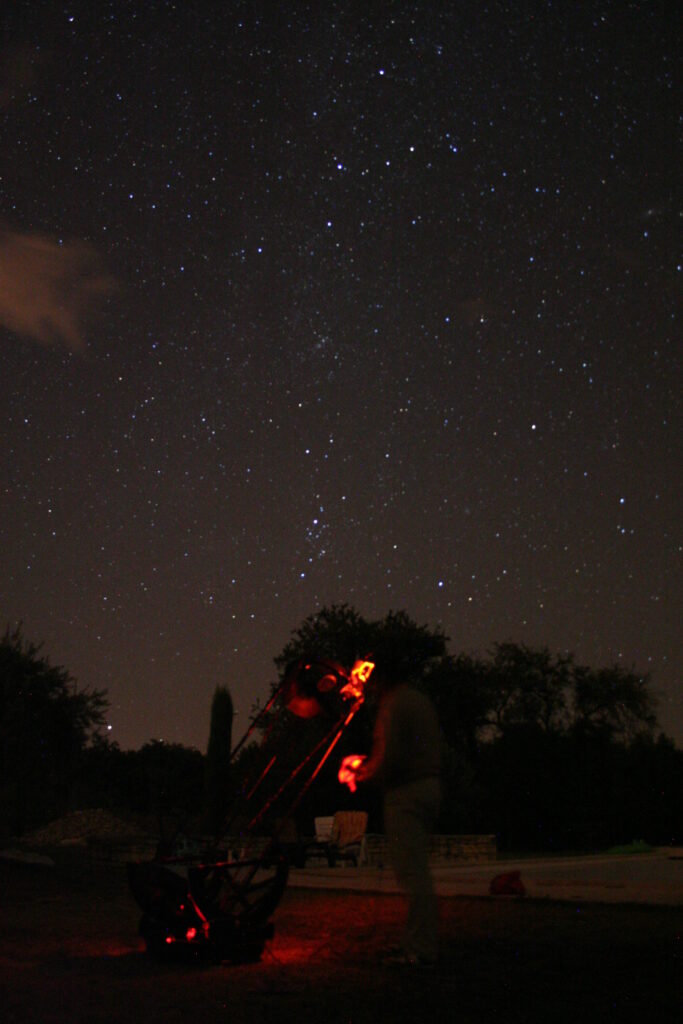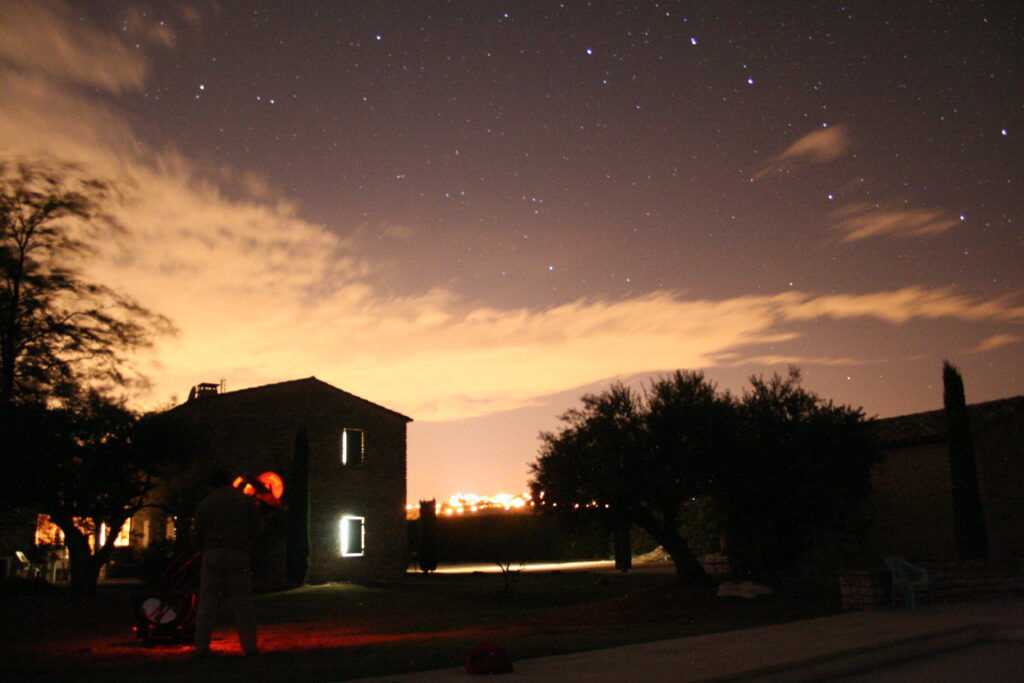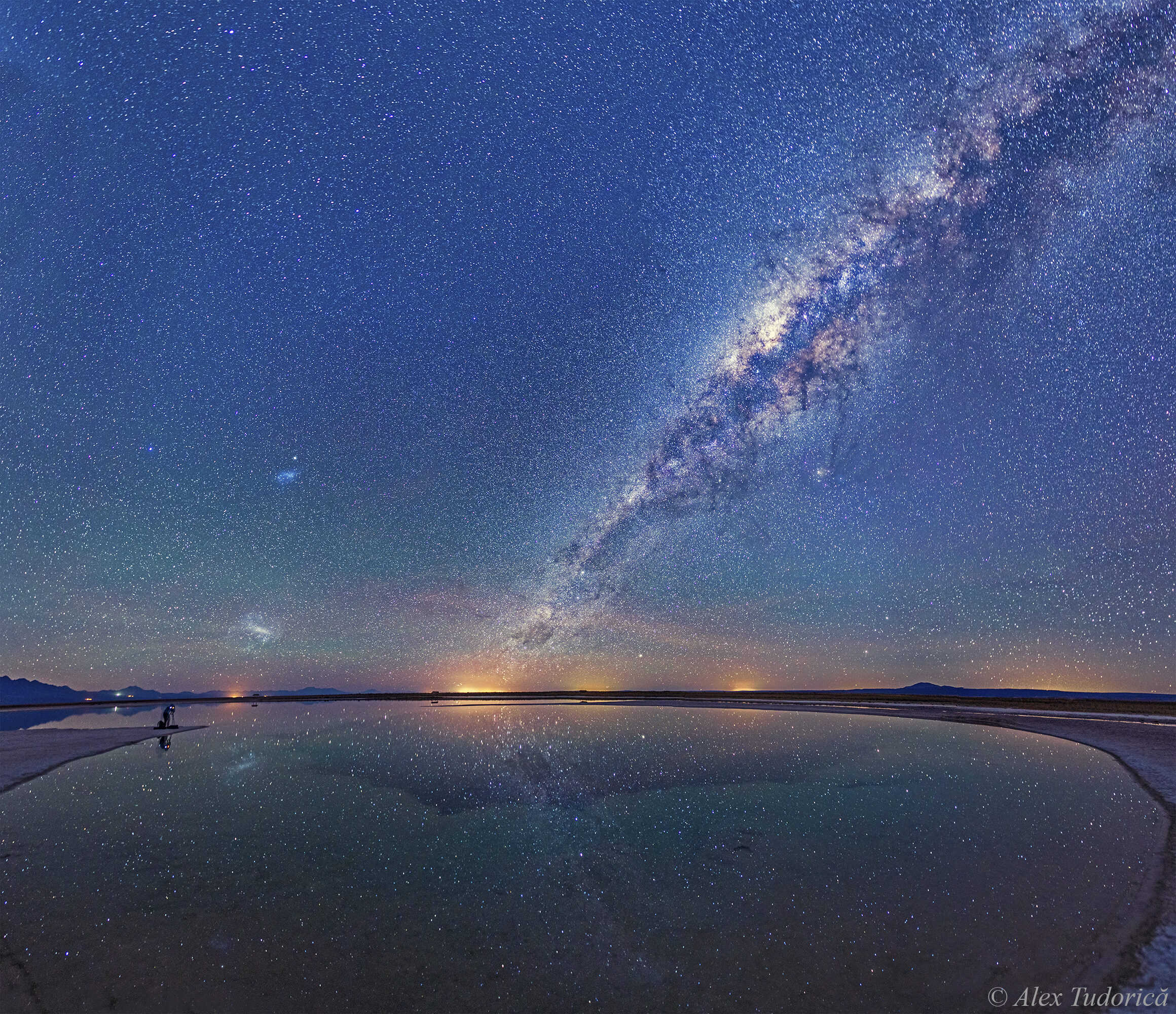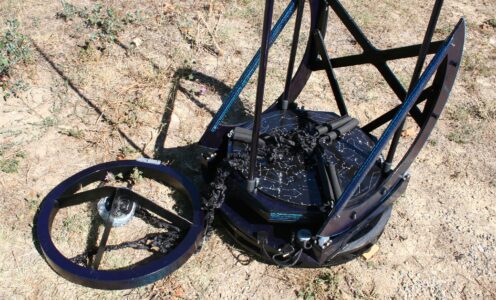<<<<Mechanics
Esthetics
The telescope is coated with DD-coating to protect the carbon. By mixing the paint with a slight shade of blue, the carbon pattern remains visible. This method was first used on racing cars and it creates a special effect. In the daylight the various components of the telescope have a color that varies between dark blue (almost purple) and very light blue depending on the angle at which the sunlight shines hits the component. The mirror cover is covered with a vinyl sticker printed with a custom made image of a star map (see figure 4 and figure 25).
Figure 25
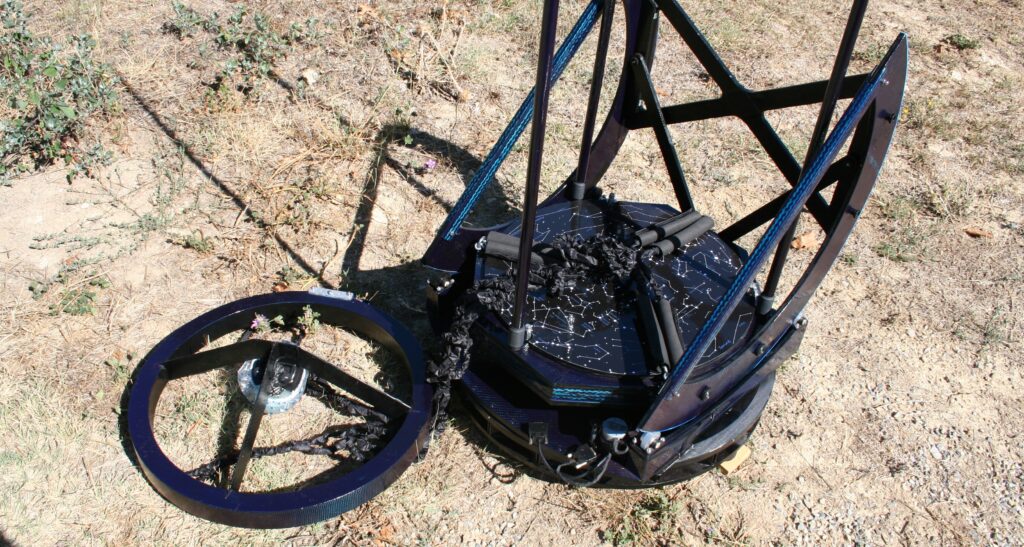
Baffles
Since this telescope has a open structure with really exposed optics, a few light blocking measures were important. Not only to optimize the performance, but also to protect certain parts of the telescope. Especially telescopes with a lowrider concept need extensive baffling on the top end of the telescope( see images figure 26). Here again a pyramid shaped secondary ring is beneficial. The top of the baffle can be placed in the light path on the secondary mirror vanes, thus making that part a lot smaller. Prerequisite to this is a stable and stiff baffle and rigid vanes. An alternative is to calculate the size of the baffle and then build the vanes according to these specs to eliminate the need for extra baffling. The downside to this is the increased size of the pyramid, which impacts on transportability.
Figure 26
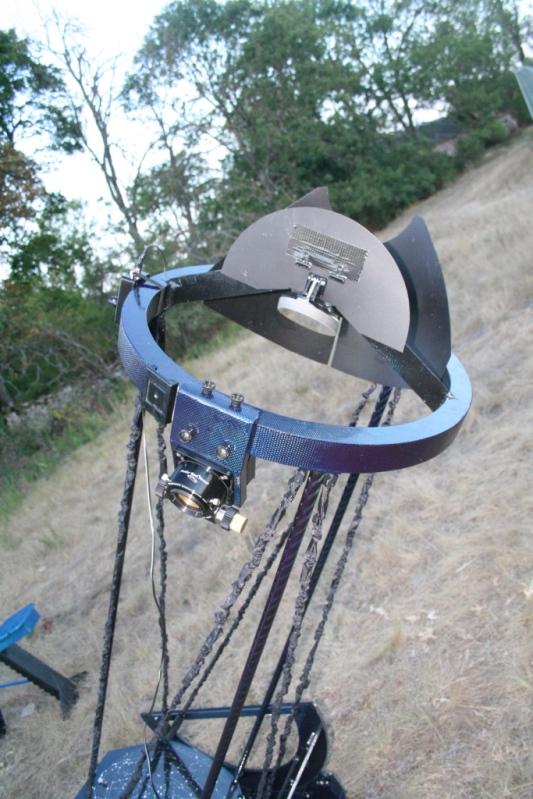
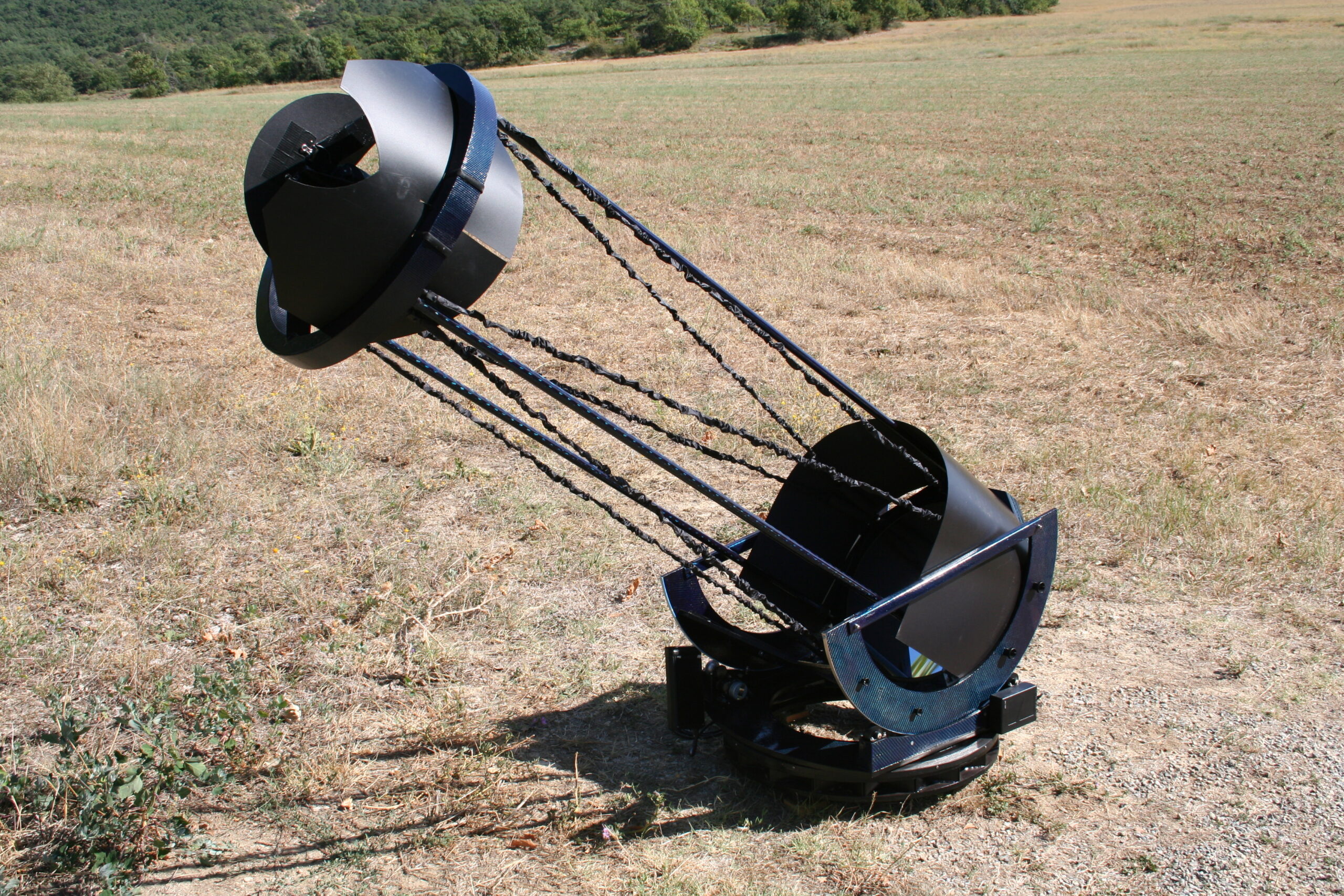
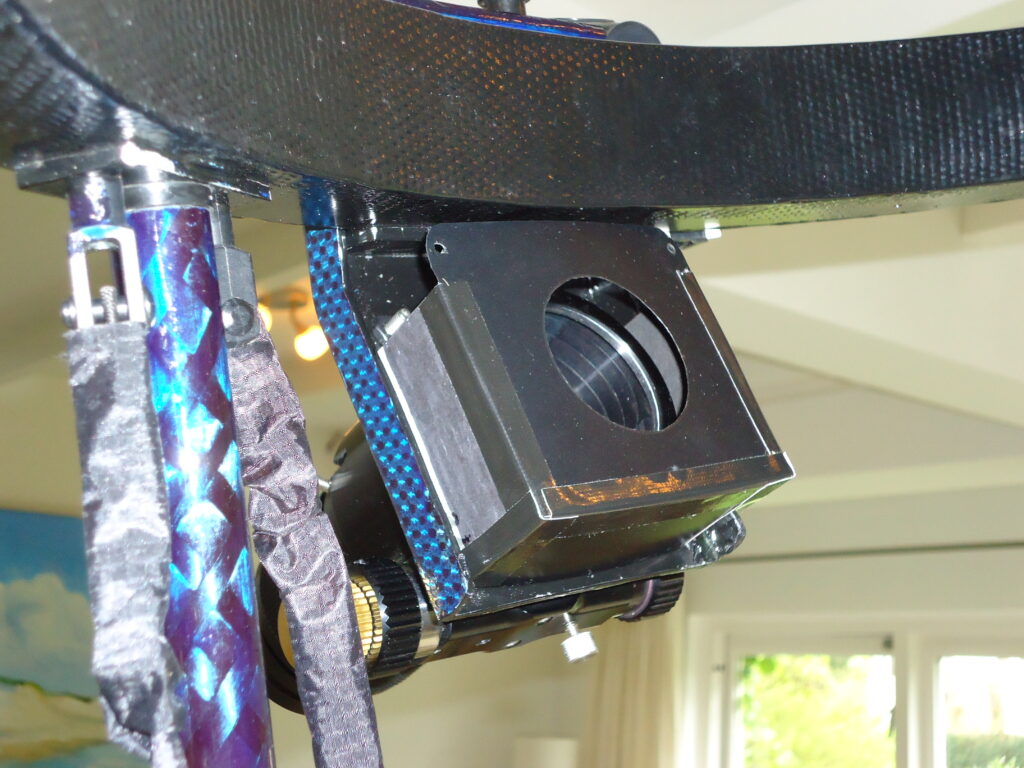
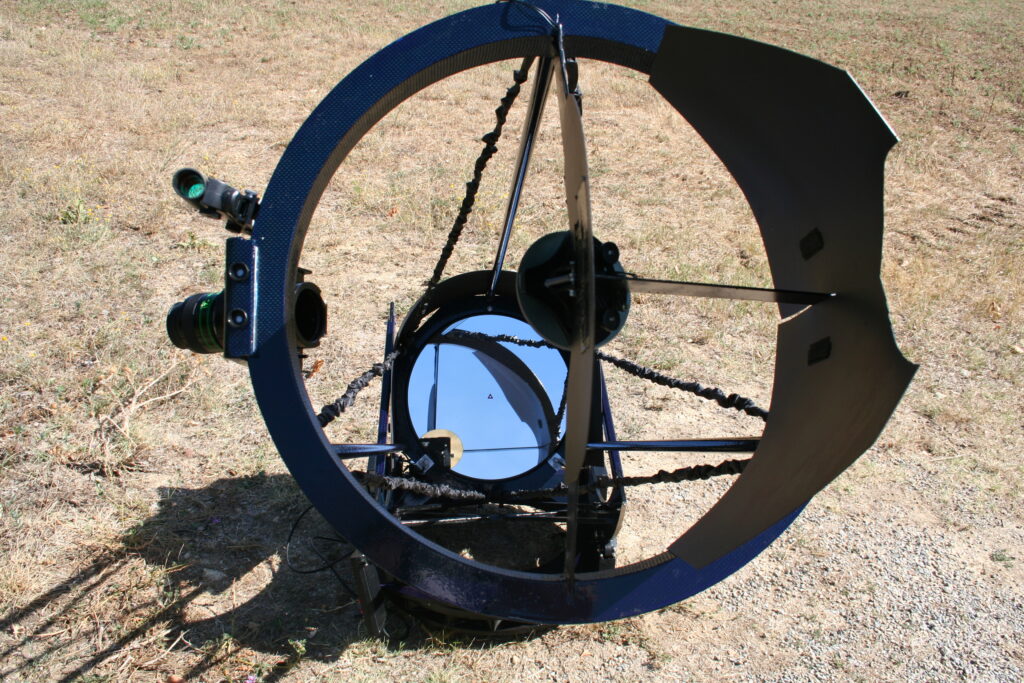
The end result
I can be brief about this. The telescope meets all my expectations. It is extremely compact compared to other telescopes of its size (see figure 27). So much so that most people think its a 40 cm telescope. Including battery, computer and an eyepiece, the telescope weights about 31 kilograms.
Figure 27 The third version of the 45 cm is not a big telescope, but the new one is dwarfed by it
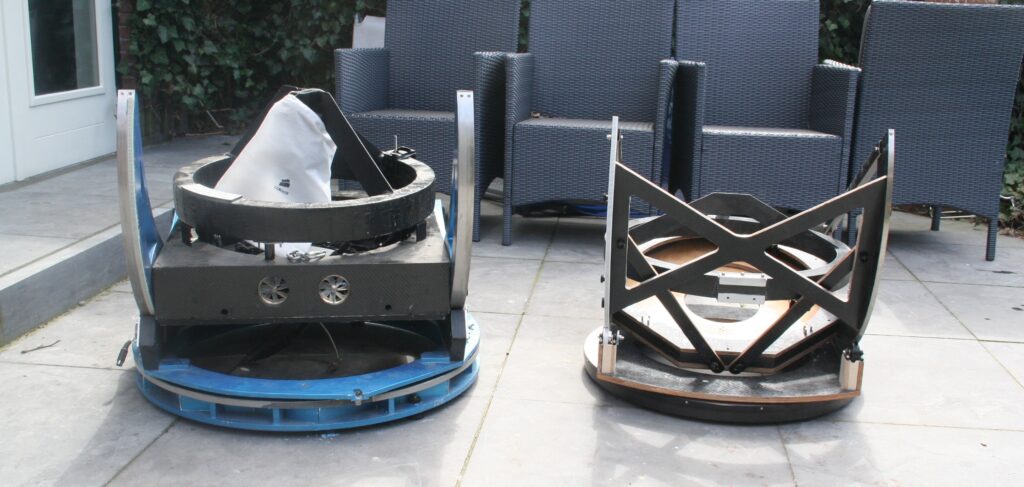
The first proper test of the telescope was in the Cevennen in the south of France (figure 30). It was extensively used by several other observers during multiple evenings under a 21.4 sky. All comments were overwhelmingly positive. Highlights were observing the central star of M57 at a more than 600x and finding the twin quasar for the first time. Observing in the zenith is easy, most of my observing is done sitting comfortably on a small chair. The telescope is stable and vibration free. Collimation is perfect from zenit to horizon. Setup time is about 5 minutes if I take it easy and the telescope breaks down into only three manageable components (figure 29). It is truly a usable instrument.
Figure 29 three manageable components (alt bearings are normally attached to mirrorbox)
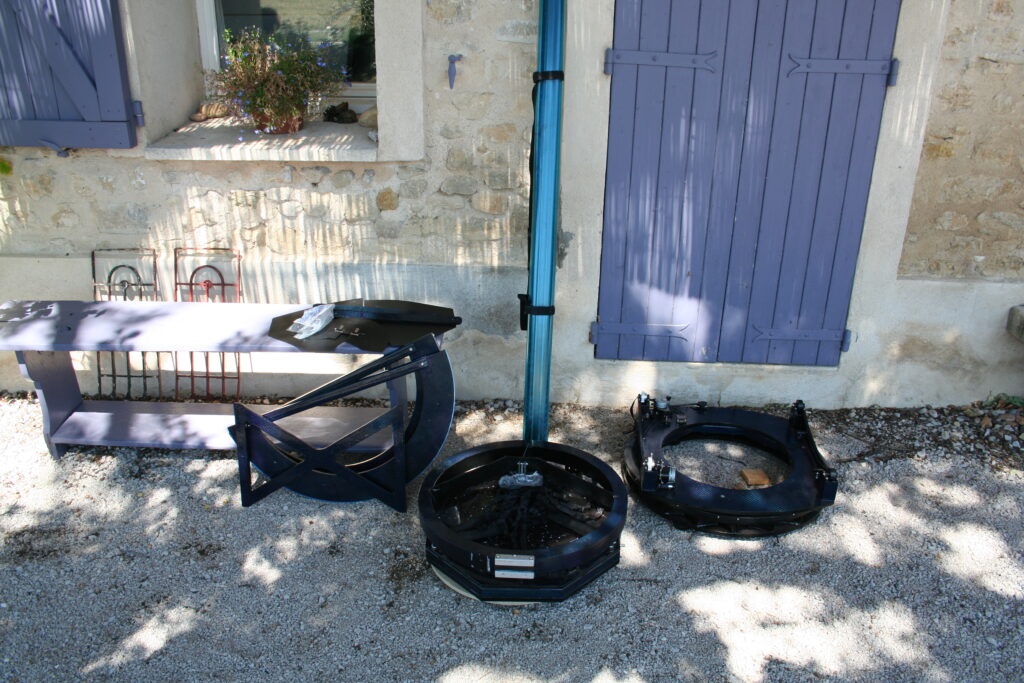
Figure 30 First light in the south of France
Some additional images of the telescope at night
